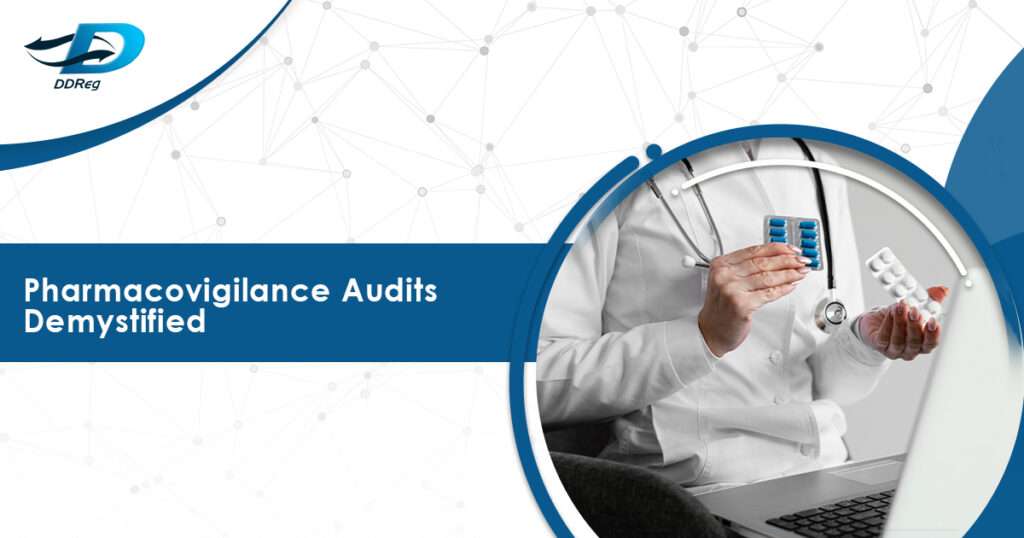
Behind every safe and effective medicine on the market lies a complex system of checks and balances and key parameter of that system are pharmacovigilance (PV) audits. While they might not grab headlines like clinical trials or breakthrough approvals, PV audits are the quiet guardians of drug safety, ensuring that pharmaceutical companies uphold the highest standards of compliance, ethics, and patient care.
Audits in pharmacovigilance (PV) function as systematic, independent reviews akin to quality control in drug safety. They evaluate whether the processes used to collect, analyze, and respond to adverse event data meet both regulatory requirements and internal company protocols. Far from being simple checklists, PV audits serve as a robust verification mechanism to ensure that organizations maintain systems capable of safeguarding patient safety, upholding legal obligations, and ensuring ethical integrity.
So, what exactly are pharmacovigilance audits? Why do they matter, and how can companies prepare for them? This blog breaks down everything you need to know, from audit types and global regulatory expectations to the role of emerging technologies in shaping modern PV practices.
Let’s dive in.
Types of Pharmacovigilance Audits
Understanding the different types of pharmacovigilance audits is crucial for building a resilient and compliant PV system.
Internal vs. External Audits
- Internal Audits: Conducted by an organization’s own audit or quality teams, internal audits are proactive tools designed to identify potential risks, process gaps, and areas for improvement before external evaluation.
- External Audits: These are carried out by independent third-party auditors such as regulatory authorities (e.g., the FDA or EMA) or business partners (e.g., contract research organizations, distributors). These audits often focus on verifying compliance with regulatory frameworks and contractual obligations. Regulatory inspections, a form of external audit, may be routine or for-cause, triggered by specific safety events or prior non-compliance.
Routine vs. Triggered Audits
- Routine Audits: Planned according to a risk-based schedule (often annually or biennially), these audits are part of a broader PV audit program designed to continuously monitor compliance and effectiveness.
- Triggered Audits: Initiated in response to specific events, such as changes in regulations, major system updates, internal quality findings, or external complaints that suggest possible safety risks.
A Step-by-Step Guide to the Pharmacovigilance Audit Process
A structured audit process ensures thorough and consistent evaluations across different parts of the PV system.
- Planning: Auditors define the scope, objectives, and evaluation criteria. A risk assessment is typically conducted to focus on high-risk areas such as new partnerships, outsourcing, or post-marketing surveillance.
- Execution: During this phase, auditors:
- Review key documents (e.g., Standard Operating Procedures or SOPs)
- Interview relevant staff
- Observe operations such as adverse event reporting or signal detection
- Check whether electronic systems align with data integrity and regulatory standards
- Analysis and Reporting: Findings are consolidated into a formal audit report that includes:
- Compliance issues
- Observations and best practices
- Recommendations for improvement
This report is shared with the audited party for further action.
- Follow-Up: Companies must implement Corrective and Preventive Actions (CAPA) to address audit findings. Follow-up audits or assessments may be scheduled to ensure the effectiveness of these corrective actions.
Key Regulatory Requirements for Pharmacovigilance Audits
Pharmacovigilance audits are not optional, they are mandated under various global regulatory frameworks.
EMA’s Good Pharmacovigilance Practices (GVP)
The European Medicines Agency (EMA) requires all Marketing Authorization Holders (MAHs) in the EU to conduct regular PV audits. GVP Module IV provides detailed guidance on conducting these audits, with a focus on compliance, risk minimization, and system improvement.
Importantly, the Pharmacovigilance System Master File (PSMF) must include:
- The audit schedule
- Summary of audit outcomes
- CAPAs and their implementation status
FDA’s Pharmacovigilance Inspections
In the U.S., the Food and Drug Administration (FDA) conducts pharmacovigilance inspections rather than audits. These may be routine or for-cause inspections targeting:
- Adverse event (AE) reporting compliance
- Signal detection and management practices
- Personnel training and role clarity
- Quality Management Systems (QMS)
ICH Guidelines for Global Harmonization
- ICH E2A: Defines standards for clinical safety data management, including expedited reporting timelines.
- ICH E2E: Offers a framework for strategic pharmacovigilance planning across the product lifecycle.
These international guidelines ensure that PV audits address both local and global compliance expectations, supporting cross-border drug approvals and consistent patient safety standards.
How Technology is Transforming PV Audits
Emerging technologies are enhancing the speed, precision, and scope of pharmacovigilance audits:
- AI & Machine Learning: These tools can analyze safety data trends, detect anomalies, and suggest risk-prioritized audit targets.
- Advanced Data Analytics: Large datasets from safety databases can be mined in real time to assess compliance and effectiveness.
- Cloud-Based Audit Management Systems: These platforms enhance collaboration, document control, and audit trail visibility across global teams.
- Electronic Document Management Systems (EDMS): Provide streamlined access to SOPs, audit records, and CAPAs with robust version control and regulatory audit readiness.
Conclusion
Pharmacovigilance audits are more than regulatory formalities hey are proactive tools for quality assurance, risk management, and continual improvement. When executed effectively, audits:
- Identify compliance gaps before they escalate
- Improve the quality and traceability of safety data
- Build team preparedness for regulatory inspections
- Enhance overall patient safety
To remain compliant, competitive, and patient-centric, pharmaceutical organizations must establish a robust audit strategy aligned with evolving global standards.
How can DDReg help?
At DDReg, we offer comprehensive pharmacovigilance services designed to help organizations strengthen their safety systems and ensure compliance throughout the product lifecycle. From PV audits and PSMF development to signal detection and global reporting, our team of experts is here to support your drug safety goals.
For guidance or support with pharmacovigilance audits, contact us. Read how our audit experts uncovered critical system gaps and improved inspection readiness:
PV System Audit Uncovers Gaps, Boosts Readiness
